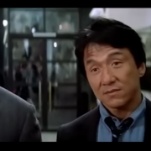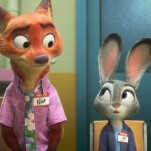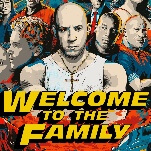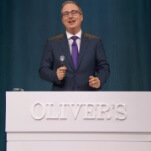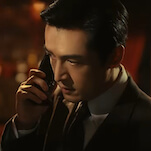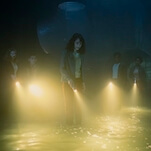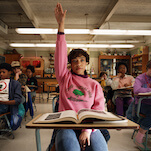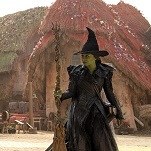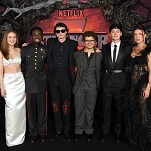As much as we live in an age of the superhero blockbuster film, we’re also witnessing an unprecedented amount of film adaptations of young adult novels. Last year alone saw, among others, the commercially successful screen adaptations of John Green’s The Fault In Our Stars, Suzanne Collins’ Mockingjay (the final installment of the Hunger Games trilogy, which has been split into two films), Veronica Roth’s Divergent, and James Dashner’s The Maze Runner. These titles are perhaps the most recognizable, but are just a sampling of the plethora of YA adaptations out there, which extend into the world of television with shows such as Pretty Little Liars and The 100.
It’s tough to pin down just when the adaptation of YA fiction became such a profitable avenue for Hollywood. Teenagers and young adults have long been a primary target demographic for many brands or companies, the reasoning being that they have a reasonable amount of disposable income. It makes capitalistic sense to latch on to a popular YA book franchise and make as many movies out of it as possible. The Harry Potter books and films, the dominant YA series of the early ’00s, surely paved the way for the machine-like consistency with which YA has been brought to the big screen in recent years. The commercial success of the films, and the cross-generational appeal of the stories, suggested that fiction geared toward young adults could be profitable across a variety of media.
The success of YA fiction on the big screen, no matter how you feel about the quality of each franchise, is significant. It would seem that YA fiction has, to some extent, been legitimized—certainly as a commercial juggernaut, but also as art more generally. YA fiction, in the specific mediums of literature and film, is an undeniable force; and as much as Harry Potter presented a model for success, it was two other books, and their authors, that shaped the cultural narrative of YA fiction as we know it, exposing and highlighting many problematic beliefs about what YA fiction is and how it’s understood as an art form.
In 2005, two debut YA novels were released that significantly shaped how the broader culture views young adult fiction. Stephenie Meyer published the first book in her coming-of-age vampire romance series, Twilight, and John Green published the coming-of-age romance (sans vampires) Looking For Alaska. While Twilight garnered commercial success almost immediately—it climbed to number five on The New York Times best seller list in the first month of its publication, something Looking For Alaska wouldn’t do for another seven years—both novels had a significant impact on YA fiction and its status within the larger culture. Twilight followed in the footsteps of Harry Potter and contributed to the understanding that YA book franchises could be immensely profitable when adapted to film. Hollywood, like any business, is interested in safe, secure choices, ones that return capital on an investment; Twilight showed that such a return could be spread out over many years and multiple films. Looking For Alaska, and its delayed success, served another purpose, legitimizing YA fiction in a different way. Harry Potter may have brought YA fiction to adult readers, but Looking For Alaska, and the subsequent critical praise of John Green, cemented YA fiction as legitimate art. How could Looking For Alaska, which deftly dealt with issues of depression and suicide, be considered anything else?
The general reception of these two books and the rest of each author’s output exposes a troubling truth about how YA is received among critics and the general population. If Looking For Alaska, and John Green’s subsequent books, including the hugely popular The Fault In Our Stars, helped to legitimize YA fiction by suggesting that such books could tackle issues that appealed to adults and teens alike, then by contrast, what was Twilight? The popular narrative of YA fiction since 2005 has created two distinct categories: there’s the fluffy, unserious, and therefore insignificant fiction, all labels often applied to Twilight. Then there’s the serious, adult, real fiction, which can be represented by the books of John Green.
The problem with this assessment of YA fiction is that it not only privileges certain genres over others, but also presents itself in gendered terms. That means that the way we have talked about YA fiction since 2005 has largely been constructed around privileging authenticity, or the idea that certain genres and books are inherently more “real” or “prestigious” than others. Gender ties into this argument because more often than not, the YA works pegged as authentic and legitimate are written by men and fall into the category of realism. In contrast, the genre of fantasy or sci-fi, and especially those that include touches of romance, are lambasted as fanciful or “guilty pleasures.” Looking For Alaska may very well be a better work of fiction than Twilight, but to suggest that one is a lesser form of art simply because of its content, or the sex of the author, is ridiculous. Despite how ludicrous it is though, it’s often central to the way we discuss YA fiction.
This problematic process of legitimization, of public opinion and the historical record embracing something as worthy of critical attention, is nothing new. Even The Beatles, now largely considered the most influential and “authentic” band of all time, were once lambasted as meaningless, empty pop music. The fact that this early assessment of The Beatles pairs up with the band’s popularity among teenage girls in the early 1960s is no accident. The critical system we have in place tends to largely accept that some works of art are more authentic and real than others, and that system consistently shoves women, and non-realistic genres like fantasy and sci-fi, to the margins. All one has to do is look at how the books of Stephenie Meyer and John Green, who both had their breakthroughs a decade ago, have been received over the years. The response to each author’s bibliography is representative of larger issues, which are the consistent lambasting of certain genres as fluff, and the marginalization and devaluing of works written by and geared toward women.
Rather than seeking to separate good and “real” YA fiction from anything childish and superficial, a task that too often relies on dated ideas of authenticity and gender, we should instead focus on how inclusive, and even progressive, YA fiction can be. The adaptation of YA fiction means that Jennifer Lawrence and Shailene Woodley land leading roles as powerful, complex, flawed women in action films, a representation that’s sorely lacking in so many Hollywood blockbusters. It allows families to experience something together; and with any luck, Hollywood will get around to adapting some of the many great YA novels that feature queer and transgender characters. Before that happens though, we should stop being so reductive in our understanding of what YA fiction is and should be.


